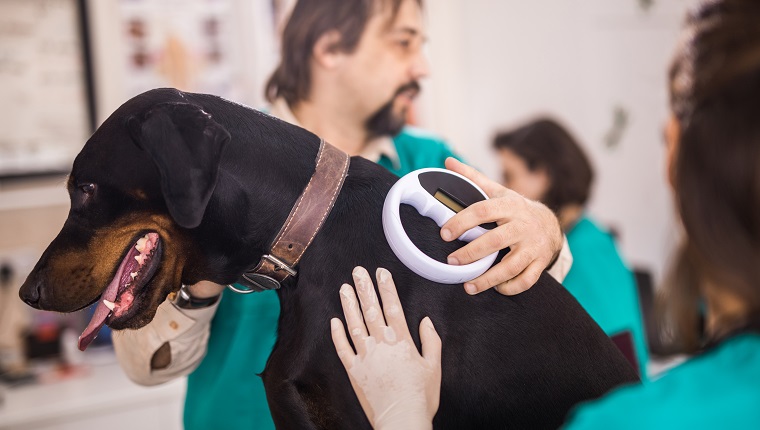May is Chip Your Pet Month, and it’s a perfect time to spread knowledge about microchips for dogs.
When it comes to statistics about lost pets, the numbers may concern and shock you. The American Humane Association estimates that one in three pets will get lost or stolen during their lifetime.
Petfinder cites a study from the American Veterinary Medical Association that claims only 22 percent of lost dogs who enter shelters are reunited with their humans. However, that percentage jumped up to over 52 percent for dogs who had microchips.
You can take steps to prevent your pets from getting lost. However, you can never know for sure if they’ll need to find their way back home one day. If they do, their chances of coming back to you jump up dramatically if they have a microchip.
Here are a few things you should know about microchipping your dog for Chip Your Pet Month.
Exactly What Is A Microchip For Pets?
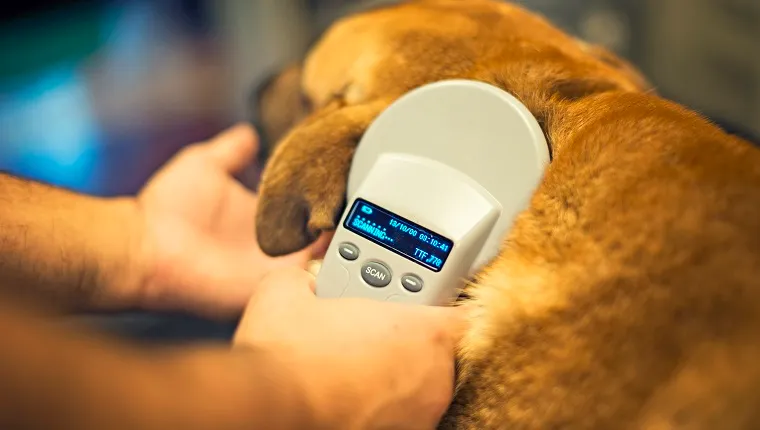
A microchip is a tiny computer chip — about the size of a grain of rice — that your vet can implant beneath your pet’s skin, usually between the shoulder blades.
Each microchip has a unique number, which goes into a pet database. Veterinary hospitals, animal shelters, and humane societies — as well as many police stations — have microchip readers. Anyone with a scanner can quickly run it over your dog’s shoulders, allowing them to read the microchip information.
The number allows the person scanning your dog to know which database you’ve registered your pet with. They can then match your pet’s number with your name and phone number so you can be contacted.
Is Microchipping A Permanent Method Of Identification?
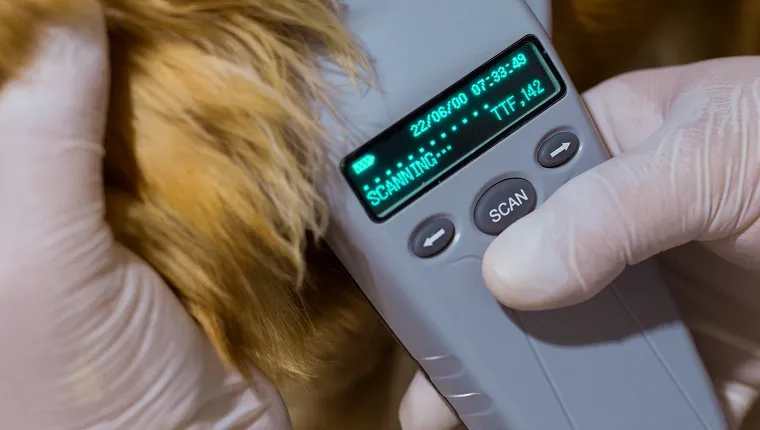
Yes, one microchip should last for your pet’s lifetime. Once you’ve registered it, your only future responsibility is updating the registry with any changes to your contact information.
Although a properly implanted chip cannot get lost or damaged, very rarely, a microchip will migrate.
It’s a good idea to have your vet scan your dog each year when they go for their annual exam. Your vet can make sure that the chip is still in the correct location and functioning properly.
Is Microchipping A New Practice?
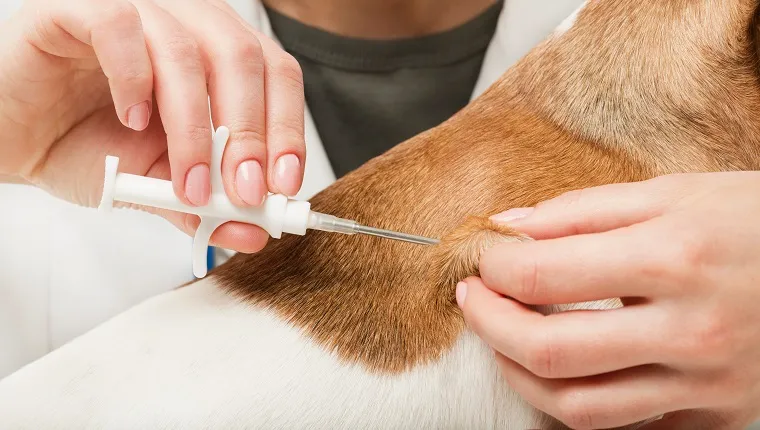
No, microchipping pets has been a common practice among pet parents around the world for many years and grows more popular each year in the United States. These tiny computer chips are actually quite amazing, as they can hold large amounts of information.
There’s no worry about duplicate numbers, as there are so many possible combinations and billions of identification numbers available. There are more than enough to make sure each pet has a unique number.
Will A Microchip Hurt Your Pet?
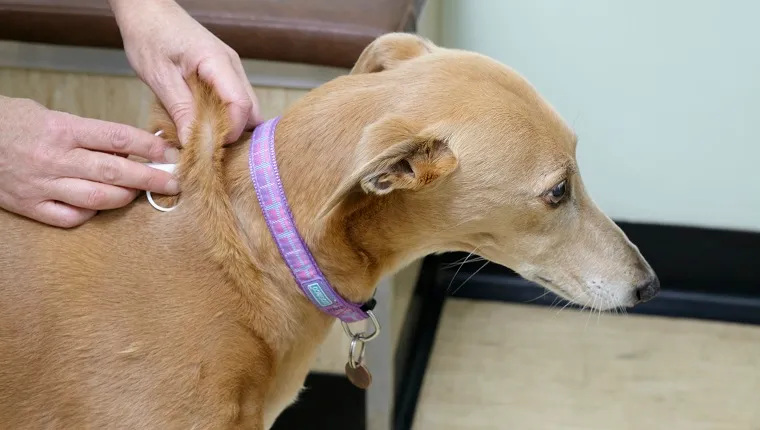
No, the procedure is simple and fairly painless, not requiring any anesthesia. It is much like getting a vaccination, and most animals show absolutely no reaction at all.
Once your pet has the implant, it’s unlikely to cause health problems or result in irritation of any kind. Your pet will likely never even know it’s there.
What Is The Cost Of Microchipping Your Pet?
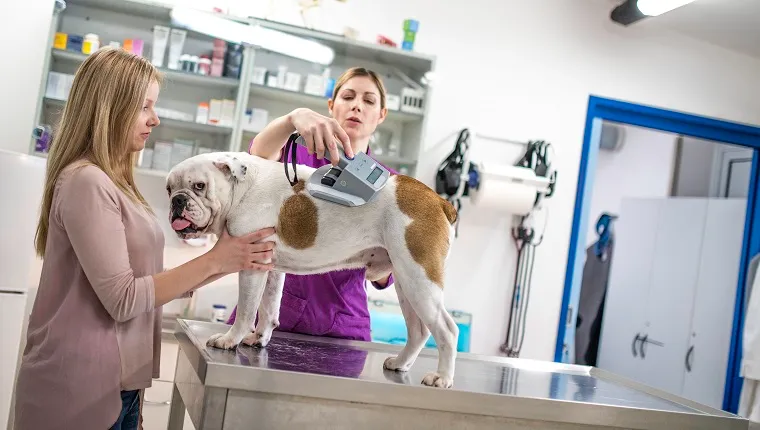
The average cost to have a microchip implanted falls between $25 and $50. However, many shelters now include the cost in adoption fees and microchip pets before they go to forever homes.
Some vets discount the rate for microchipping if it’s done at the same time as the pet is being neutered, spayed, or put under anesthesia for something routine such as dental work.
Some humane societies also have microchip clinics at times where they may offer the procedure for free or very cheap. Check with your local humane organization to see if they offer these clinics.
There may also be a small, one-time fee to register your information with the database. That said, it’s still much cheaper than the things you’d need to do if your pet got lost without identification.
Are There Downsides To Microchipping Pets?
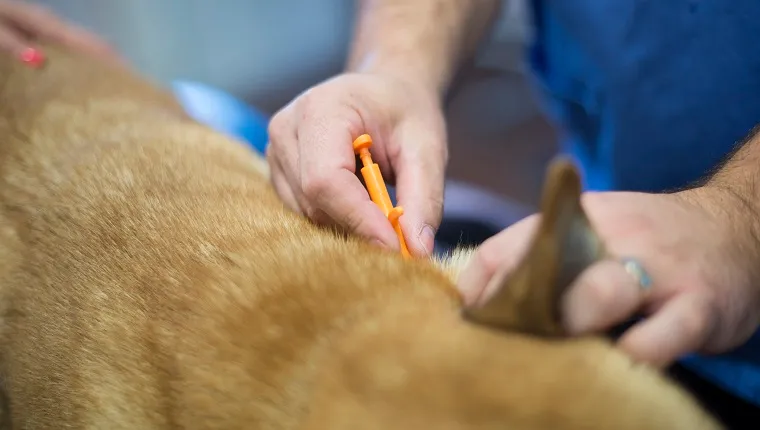
The only downside to a microchip is that this form of identification won’t work unless your pet is taken to someone who has a scanner. Animal shelters and vets are offered the microchip readers for free or for a very small fee, so almost all of them have readers available.
Furthermore, many police stations and animal control facilities have chip readers, as well. So if someone takes your pet to the authorities, they will read the chip and contact you.
However, if an individual who’s unfamiliar with microchips picks up your lost pet — and thus doesn’t take them in to be scanned — then they can’t identify your dog through their chip. That’s one reason why all dogs should still wear collars with ID tags.
Your microchip should also come with a tag for your dog’s collar, which has a toll-free number listed. If someone finds your dog and calls that number, they can provide the identifying number on the tag.
Should your pet become lost, be sure to notify your microchip provider. Some send alerts to animal shelters, veterinary clinics, and other members of their network near where you lost your pet. They send alerts out immediately when you call them to report your lost pet.
They may also have a “Lost Pet” poster service and other benefits available.
The advantages to a microchip far outweigh any inconvenience or minor expenses. To find out more, give your vet’s office a call today.
Does your dog have a microchip? Will you help spread the word for Chip Your Pet Month? Let us know in the comments below!
